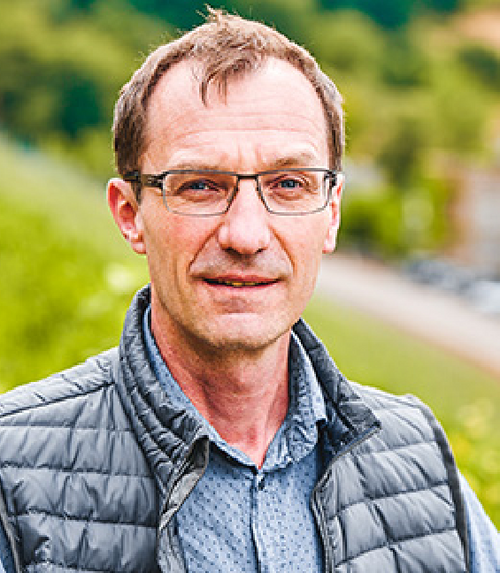
THE PIONEER OF GREAT DRY RIESLING WINES IN THE MOSEL-SAAR-RUWER REGION!
The traditional Reichsgraf von Kesselstatt winery is one of the few estates that cultivates vineyards on all three rivers: Moselle, Saar and Ruwer. This gives the winery a unique portfolio of vineyards, which also includes a beautiful plot in the legendary Scharzhofberg.
Here you can get the wines of the Reichsgraf von Kesselstatt winery at the usual winemaker prices .
THE PIONEER OF GREAT DRY RIESLING WINES IN THE MOSEL-SAAR-RUWER REGION!
The traditional Reichsgraf von Kesselstatt winery is one of the few estates that cultivates vineyards on all three rivers: Moselle, Saar and Ruwer. This gives the winery a unique portfolio of vineyards, which also includes a beautiful plot in the legendary Scharzhofberg.
Here you can get the wines of the Reichsgraf von Kesselstatt winery at the usual winemaker prices .
last seen
"One of the oldest wineries in Germany"
The Reichsgraf von Kesselstatt winery is one of the oldest wineries in the region and in all of Germany. Since the first documented mention of the purchase of "vineyards" for the
Tracing its history back to the knightly family von Kesselstatt in 1349, the winery boasts over 670 years of tradition. A pivotal year was 1787, when the last Archbishop and Elector of Trier, Clemens Wenzeslaus, ordered the planting of Riesling and Elbling instead of the "reprehensible Rhine vines," which he considered to produce inferior grapes with excessive acidity. He thus entered history as the "Riesling Prince" and ensured the widespread cultivation of Riesling in the Mosel-Saar-Ruwer region. Between 1854 and 1889, the von Kesselstatt family purchased four former Maximinian monasteries along with their vineyards on the Mosel, Saar, and Ruwer rivers. The top vineyards of Josephshof (Graach - Mosel), Domklausenhof (Piesport - Mosel), Abteihof (Oberemmel - Saar), and St. Irminenhof (Kasel - Ruwer) still form the core of the winery's unique portfolio. In 1978, Günther Reh, a successful entrepreneur from Leiwen who made a name for himself in the sparkling wine industry with his company Faber, acquired the winery. His daughter Annegret was immediately passionate about the traditional winery and took over the operation in 1983 after completing her winemaking apprenticeship – a novelty, as the wine world was then dominated by men, and a woman as winery director was almost unthinkable at the time. However, with her great passion for Riesling, eloquence, and charisma, she quickly made a name for herself in the industry and brought the winery great recognition in Germany and worldwide. Hardly anyone championed German Riesling internationally as much as she did! One of her most important tasks at the winery was the gradual reduction of vineyard acreage. In the mid-1980s, the winery still cultivated over 100 hectares of vines! The long travel times to the plots scattered across all three river valleys were no longer efficient, and so the vineyard area was gradually reduced to the current 46 hectares, which significantly improved the quality of the individual wines! With the construction of the new winery, Annegret Reh-Gartner had perfectly positioned the business for the future after 33 years, before she passed away much too early in 2016.
"A pioneer for great dry Rieslings"
In the vineyard, the team at Reichsgraf von Kesselstatt consistently relies on yield-reducing measures, such as thinning the grapes and green harvesting in late summer. Leaf removal in the grape zone in early autumn ensures that the ripening grapes are well-ventilated and remain healthy for as long as possible, which is crucial for the production of great dry wines. Many of the best vineyards contain old, partly rootstock Riesling vines. In autumn, the grapes are selectively hand-picked into small baskets to bring them to the new winery as undamaged as possible. There, the grapes are gently processed on state-of-the-art pressing equipment and fermented in stainless steel tanks in the cool cellar, preferably with native yeasts. With such a large number of top vineyards in all three river valleys, the challenge for cellar master Wolfgang Mertes is to bring the terroir of each individual vineyard as faithfully as possible to the bottle, thus making the unmistakable origin of the wines perceptible to the nose and palate. Most wines remain on the fine lees until shortly before bottling, giving them a fine, silky texture and aromatic depth. The Große Gewächse (Great Wines) are partly aged in large wooden barrels to give them even more structure and expressiveness.
"Excellent food companion with fantastic aging potential"
The Kesselstatt portfolio is divided into four lines. The VDP.Gutsweine can generally contain both our own grapes and purchased grapes from various vineyards along all three rivers and are uncomplicated, refreshing wines for everyday enjoyment. The VDP.Ortsweine and VDP.Grosse Lage wines are subdivided into the three collections Mosel, Saar and Ruwer, which are clearly indicated on the labels. Typical of Kesselstatt wines is their excellent suitability as food companions. They particularly benefit from a few years of maturation, because with age...
the wines increasingly reflect the unique terroir of the individual vineyards and develop a fine mellowness as well as aromatic depth.
 Delivery time 2-3 working days
Delivery time 2-3 working days Saar wines at winemaker prices
Saar wines at winemaker prices Largest Saar wine range on the web
Largest Saar wine range on the web Advice: 0176 638 92254
Advice: 0176 638 92254




